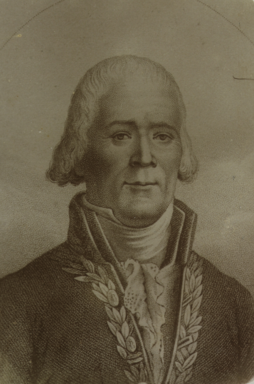Narcisse Henri François Desportes (12 December 1776 – June 7, 1856) was a French botanist and bibliographer who was a native of Champrond.

Champrond is a commune in the Sarthe department in the region of Pays-de-la-Loire in north-western France.
Contents
He worked as an auditor to Jean-Baptiste de Lamarck at the Muséum national d'histoire naturelle in Paris, and became curator of the Musée d'histoire naturelle in Le Mans. He was the author of bibliographies associated with the departments of Sarthe and Mayenne.

Paris is the capital and most populous city of France, with an area of 105 square kilometres and an official estimated population of 2,140,526 residents as of 1 January 2019. Since the 17th century, Paris has been one of Europe's major centres of finance, diplomacy, commerce, fashion, science, and the arts.

A curator is a manager or overseer. Traditionally, a curator or keeper of a cultural heritage institution is a content specialist charged with an institution's collections and involved with the interpretation of heritage material.

Le Mans is a city in France, on the Sarthe River. Traditionally the capital of the province of Maine, it is now the capital of the Sarthe department and the seat of the Roman Catholic diocese of Le Mans. Le Mans is a part of the Pays de la Loire region.
In 1829 Desportes identified 2562 species and varieties of rose known to exist in France, of which he catalogued in a work titled Roses cultivées en France, au nombre de 2562 espèces ou variétés, avec la synonymie française et latine.

A rose is a woody perennial flowering plant of the genus Rosa, in the family Rosaceae, or the flower it bears. There are over three hundred species and thousands of cultivars. They form a group of plants that can be erect shrubs, climbing, or trailing, with stems that are often armed with sharp prickles. Flowers vary in size and shape and are usually large and showy, in colours ranging from white through yellows and reds. Most species are native to Asia, with smaller numbers native to Europe, North America, and northwestern Africa. Species, cultivars and hybrids are all widely grown for their beauty and often are fragrant. Roses have acquired cultural significance in many societies. Rose plants range in size from compact, miniature roses, to climbers that can reach seven meters in height. Different species hybridize easily, and this has been used in the development of the wide range of garden roses.












